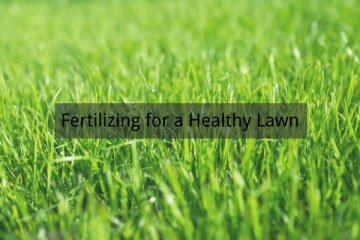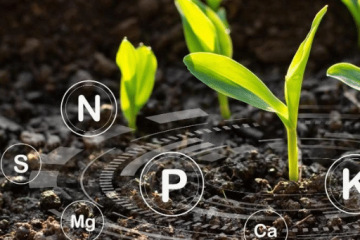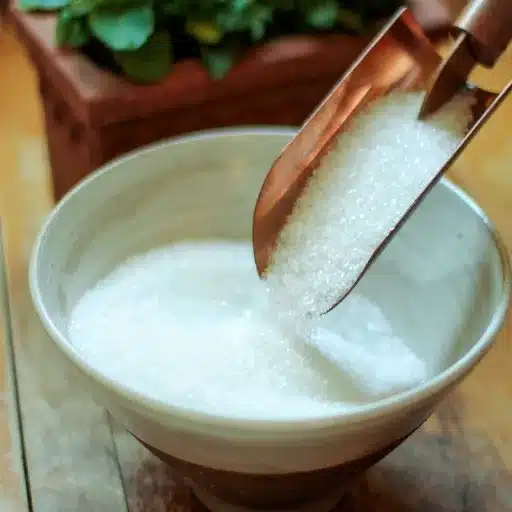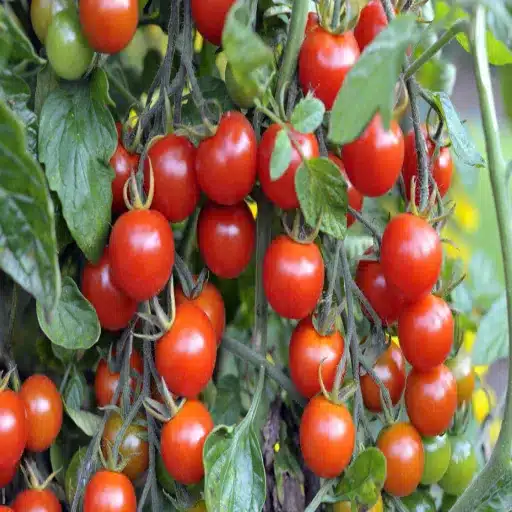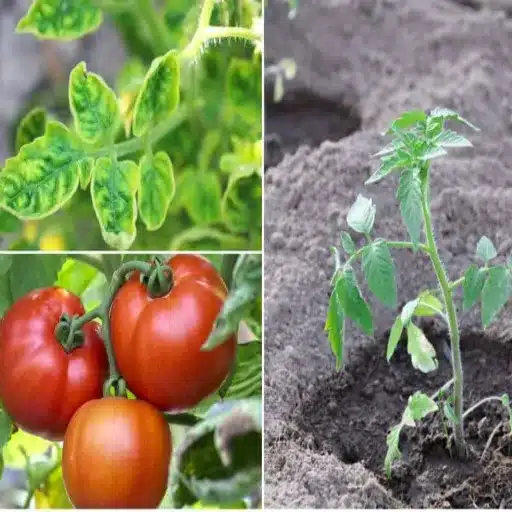When it comes to promoting healthy plant growth, few solutions are as versatile and reliable as organic 5-5-5 fertilizer. Whether you’re cultivating a vegetable garden, nurturing vibrant flowers, or maintaining lush landscaping, this all-purpose plant food delivers balanced nutrients essential for robust development. But what makes 5-5-5 fertilizer stand out, and why is it a favorite among experienced gardeners and eco-conscious growers alike? This article explores everything you need to know about this nutrient-rich solution, including its composition, benefits, and how to use it effectively to maximize your plants’ potential. Get ready to unlock the secrets to cultivating thriving, nutrient-packed greenery in your garden.
Introduction to Balanced Fertilizers
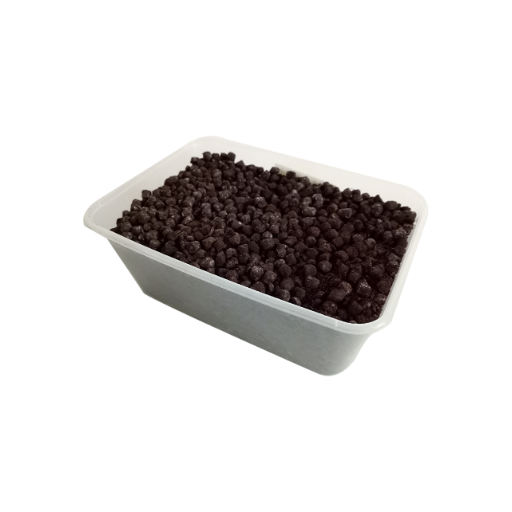
The Importance of Balanced Nutrients
The centrality of healthy nutrient balance for plants lies in its being the basic requirement for growth, development, and reproduction. A balanced fertilizer, such as a 5-5-5 blend, makes provision for an equal ratio of nitrogen (N), phosphorus (P), and potassium (K), which are the main macronutrients for plants. Nitrogen brings about the growth of leaves and vigor in general, phosphorus balances root systems for better flowering, and potassium furthers disease resistance and fruit formation. They work mutually to provide a favorable environment for plant performance.
Thus, fertilizers with balanced nutrients keep plants from being deficient in any particular nutrient, and deficiency manifestations include retarded growth, discoloration of leaves, or dismal yield. Nitrogen deficiency may be seen as yellowing of leaves, while phosphorus deficiency produces slow growth of roots. A-5-5-5 fertilizer will help in such a situation by providing these important nutrients in equal amounts, thereby eliminating the guesswork in nutrient management of plants. Thus, this approach serves every gardener coping with plants that have very different nutrient needs.
Such measures are also important to avoid the disastrous consequences of excess fertilization on the environment and the plants. Applying unbalanced excessive quantities of one nutrient in the hope of bringing a result might rather bring toxicity to plants, destroy soil life, and pollute through runoff-either or all three. Conversely, following the tracks of a balanced fertilizer like 5-5-5 ensures the growers that their plants will be endowed with a balanced nourishment basis while upholding environmentally friendly gardening practice, which will lend to their being healthy plants with a thriving garden ecosystem.
How Fertilizers Support Plant Growth
Fertilizers support plant growth by supplying essential nutrients that might have been depleted from the soil. The required nutrients that work at the different stages of plant development are primarily nitrogen (N), phosphorus (P), and potassium (K). Nitrogen increases growth in the leafy-green area; phosphorus enhances root development and flowering, whereas potassium aids in overall development and disease resistance. The combined action of these nutrients will ensure that the plants are produced and healthy.
Besides the primary elements, fertilizers also supply secondary elements and micronutrients such as calcium, magnesium, iron, and zinc that are needed in limited quantities but are essential in multiple plant functions. These nutrients help in photosynthesis, enzyme activation, or cell metabolism. In case of deficiency, such nutrients cause growth hindrance in the plants or sometimes discoloration of leaves or a decrease in yield.
But all applications of fertilizers depend on the correct modes of their usage. Too much application or improper proportioning of fertilizers can act against plants and eventually lead to pollution of water bodies, thereby disturbing soil ecosystems. Thus, based on soil tests and requirements by both plants and seasons, fertilizers should be applied wherever necessary and compensate effectively for environmental damage to the sustenance of plant growth and to keep soil healthy.
Overview of Organic Options
Being an alternative to synthetics, organic fertilizers present a sustainable way to nourish plants. These fertilizers rely on natural sources for nutrients: animal manure, compost, plant residue, or any of several others. Traditionally, such are slow-acting fertilizer-type agencies that release nutrients over extended periods as soil microbes degrade them. This stepwise release supports plants in steady growth rates and lessens the likelihood of nutrients that go into the lake water, making the fertilizer ecologically friendly.
Compost, in general, enriches soil with organic matter and enhances soil structure. Manure, in varying amounts depending on the animal, provides nitrogen, phosphorus, and potassium. Bone meal and blood meal provide phosphorus and nitrogen, respectively. Green manure, on the other hand, consists of cover crops grown and then tilled into the soil to provide nitrogen and maintain soil microbial life.
Organic fertilizers additionally work on aerating the soil, retaining water, and activating microbe life, maintaining the health of the growing environment. However, it should be understood that these fertilizers have less capacity for value concentration as compared to synthetic ones. Application of larger amounts would then be required to have the same impact. Testing the soil before applying the fertilizer helps judge what type and amount of organic fertilizer is required for plant health and soil sustainability.
Key Benefits of 5-5-5 Organic Fertilizer
Balanced Nutrient Composition
The 5-5-5 organic fertilizer has the characteristics of a balanced nutrient ratio, with 5% each of nitrogen (N), phosphorus (P), and potassium (K), designed to carry out basic plant nourishment without detrimental effects on the soil. Nitrogen is responsible for good vegetative growth and strengthening stems and the foliage required for photosynthesis, phosphorus helps in the development of roots and production of flowers and fruits, whereas potassium promotes plant immunity and strength of root systems with the overall metabolic functions. This balanced formula supplies nutrition evenly, avoiding the disadvantages of fertilizers that contain high concentrations of any single nutrient.
Being applied on land, the nutrients contained in a 5-5-5 organic fertilizer are slowly released to the soil, allowing plants to absorb nutrients for a long period. This release mechanism is largely mediated by soil microorganisms that break down and convert organic matter into plant-usable forms. These types of natural processes therefore avoid nutrient leaching—one of the main challenges with synthetic fertilizer application—thus enhancing nutrient use efficiency. Research proves that organic fertilizers like the 5-5-5 blend become a great contributor to soil organic matter, thereby enhancing the structure, aeration, and moisture-retaining capacity.
The other applications range from vegetable gardens, flower beds, shrubs, and fruit trees because of the balanced nature of this fertilizer. Nutrient distribution in the plants maintains uniformity, thus preventing deficiency issues, which simultaneously upholds environmental sustainability by preventing excessive nutrient runoff. This is an essential factor in the prevention of eutrophication of nearby water bodies, the protection of ecosystems, and the practice of sustainable agriculture.
Versatility for a Wide Range of Plants
Balanced fertilizers are flexible and adapt to a wide variety of plants, from ornamental plants to edible crops. For instance, petunia and marigold flowering plants benefit from balanced nutrient profiles that sustain vibrant bloom development and good foliage growth. Vegetables such as tomatoes, spinach, and peppers thrive with equal supply and in proportionate amounts of nitrogen, phosphorus, and potassium. This flexibility means that there is no need for multiple fertilizers aimed at different crops, thereby simplifying agricultural and horticultural activities.
The most beneficial way to apply them in agricultural settings is to use them at full strength, fertilizers improve ease for plant growers. For seedlings, a balanced mix encourages strong root establishment and early development, while mature plants get steady support in nutrition for prolonged growth and reproductive success. By varying application rates and intervals depending on the needs of particular plants, growers can achieve maximum productivity without risking degrading the soil or affecting the resilience of the cultivated plants.
When used in mixed planting systems such as companion planting or crop rotation, balanced fertilizers develop great utility because they share an environment where different plants might co-exist. These systems bring about difficulty as various species might have different nutrient interests. Uniform nutrient provision ensures that every plant is treated with the nutrients it needs, thus supporting the interspecies interaction, hence enhancing success for all at the site. This very adaptive nature of balanced fertilizers reaffirms that they are the backbone for efficient, sustainable agricultural practices.
Support for Soil Health and Microbes
Balanced fertilizers are used for maintaining the health of the soil and improving it, as they supply a certain set of nutrient elements extracted by plants during their growth cycles. This prevents the depletion of these nutrients, which is considered one of the major factors behind the decline in soil fertility in agricultural systems. Further, fertilizers tend to incite activities of soil microbes responsible for the decomposition of organic matter, nitrogen fixation, and improvement of soil structure.
For example, when fertilizers are properly balanced in application, they will encourage a beneficial microorganism population to flourish. These microorganisms also improve the water and nutrient holding capacity of the soil, thus establishing a fertile, self-sustaining cycle. Science indicates that an adequately balanced application of N, P, and K, together with secondary and trace elements, significantly increases microbial biomass and enzymatic activity in soils, which positively affects plant growth.
This interaction of fertilizers and soil microbiomes stresses the critical nature of precision fertilization. Advanced technologies have even further assisted in good outcomes for soil ecosystems with bio-enhanced fertilizers and polymer-coated blends supplying nutrients in a slow-release fashion that fits with microbial and crop demand. Hence, these balanced fertilizers act as a bridge between plant and microbial ecosystem sustainability and thus mark to longevity and resilience in soil sustainability and transition into one of the pillars of integrated soil fertility management practices.
Applications of 5-5-5 Fertilizer in Gardening

Using 5-5-5 in Vegetable Gardens
Being a great all-purpose fertilizer with a balanced N:P: K ratio, my first choice for fertilizer in vegetable gardens has always been 5-5-5. An equal quantity of nitrogen, phosphorus, and potassium present in the fertilizer ensures that root growth, vegetative growth, and fruit set occur simultaneously. This stage of healthy development creates a well-established basis for plants, especially during the initial phases of growth that critically require nutrient support.
Before planting, I usually apply the 5-5-5 fertilizer by spreading it evenly on the soil surface and lightly mixing it into the topsoil. For plants already established, I give side dressing applications by placing the fertilizer a little distance away from the plant base to avoid root burns, yet allow gradual absorption of nutrients into the root zone. Fertilizer applications are scheduled according to the vegetable growth cycle with regular intervals so the garden does not get flooded with nutrients, yet still replenishes the nutrients required.
I always adhere to the recommended rate of fertilizer application but adjust accordingly according to the needs of the garden soil, for which I carry out soil testing every so often. Knowing what the soil already has lets me make the best use of fertilizers without creating imbalances and excesses. By carefully using the fertilizer 5-5-5, I create conditions where my vegetable garden flourishes, resulting in healthy, top-quality produce every season.
Enhancing Flowerbeds with Balanced Nutrition
Creating nutrient-rich flowerbeds requires strategic soil management, keeping all nutrients—macro and micro—in their optimal proportions. A balanced fertilizer, such as 10-10-10, has been commonly recommended since it provides an equal share of the three main nutrient elements, nitrogen, phosphorus, and potassium, which are needed in plant growth, bloom production, and plant health and development. However, performing a good soil analysis must come first in identifying any specific deficiency or excess present.
Lately, innovations in soil-testing kits have made data on pH, organic matter, and nutrients more readily available. One can go on to adjust the fertilizer and rates of application accordingly, thereby avoiding over-application of some nutrients that might result in the nuisance of nutrient leaching or toxicity to plants. Besides, adding organic matter such as well-rotted manure or leaf mold improves soil structure and encourages microbial life, thus assuring a sustainable nutrient cycle in the flowerbed.
With good monitoring of soil conditions and following this best practice, the nutrient status of flowerbeds will be well sustained. This will, thus, bring about vibrant and long-lasting flowers that later turn into garlands against pests and environmental stresses, thereby adding to the enhancement of the appearance and health of your garden.
Container Gardening: Ideal for Limited Spaces
Container gardening stands as a relatively modern horticultural technique that allows for cultivation in compact environments such as an apartment or an urban apartment, a balcony, or a small patio. Growing plants in containers can mean pots, planters, or even recycled vessels, offering dynamic options for execution and design. In contemporary times, lightweight modular synthetic containers of fiberglass or resin nod to optimal durability while keeping their weight at a minimum.
If maximizing container gardens, selecting plants with shallow roots or varieties bred for restricted growth conditions is essential. Lettuce, radishes, strawberries, and herbs such as basil and thyme flourish in such conditions. Scalable methods, like vertical garden setups or stackable pots, can further enlarge the utility of limited space while guaranteeing sufficient light exposure for plants on all layers.
Research states that the proper drainage system and soil composition are significant elements in container gardening. Containers that do not have holes will lead to waterlogging and root rot; the soil must remain light, nutrient-rich, and well aerated. Peat, perlite, and vermiculite with slow-release fertilizers are recommended for the best development of plants. The installation of irrigation technology will assist in irrigation efficiency while reducing workload. Technologies used include self-watering containers or drip irrigation systems.
By merging scientifically and technologically guided methods and designs, container gardening not only fulfills the ever-increasing need for space but also contributes to urban sustainability and biodiversity conservation.
Practical Tips for Using 5-5-5 Fertilizer
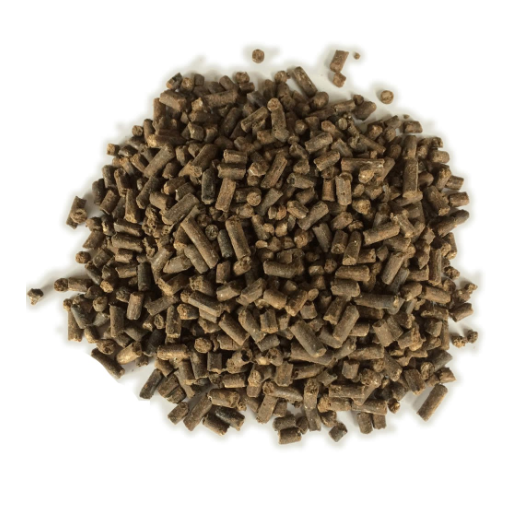
How to Apply the Fertilizer Effectively
When applying 5-5-5 fertilizer, it is important to observe particular application methods in order to ensure proper nutrient absorption and plant health. This fertilizer is balanced, containing equal amounts of nitrogen (N), phosphorus (P), and potassium (K). Hence, it can be used in any situation and would benefit a wide range of plants. One needs first to ascertain what their plants require, which is dependent on the species, growth stage, and soil composition. A soil test for the fertilizer application will give you the information on existing nutrient levels and deficiencies.
When you want to apply this fertilizer, take the quantity as per instructions on the bag, which often corresponds to the square footage of a planting area or container size. For garden beds, directly sprinkle the fertilizer granules evenly on the surface of the soil and rake them lightly into the soil to avoid washing off. For containers, mix fertilizer into the soil at the surface, to a depth of 2 or 3 inches, or as advised for the container. After this is done, water the soil well to activate the nutrients and facilitate root uptake.
The fertilizer must be applied during the growing season and, ideally, 4-6 weeks apart from another application to avoid excess fertilizing. Watch your plants for signs of nutrient deficiencies or excesses and regulate the fertilizer application in terms of frequency or amount, respectively. Care combined with such detailed application methods is what brings about optimum utilization of 5-5-5 fertilizer, balanced growth, and hearty plants.
Timing Your Applications During the Growing Season
Fertilizer applications must be scheduled at an exact time just before or during key growth periods so as to ensure response. Fertilizer needs arise in plants mostly during growth periods occurring from spring to early summer. Therefore, the application of a balanced fertilizer 5-5-5 ensures that essential macronutrients such as nitrogen, phosphorus, and potassium are made available to the growing plants when they really need them, viz., for root establishment, foliage production, and flowering.
The first application should occur just past the last frost date, as soon as soil temperatures start rising and roots become active, so goes the data. The following applications are spaced for 4-6 weeks, ensuring that there is continuous growth rather than nutrient overload in the soil. Studies suggest that over-fertilizing might actually inhibit nutrient uptake with ensuing runoff from the environment; thus, one should strictly follow application dates and dosages.
Finally, during late summer, fertilizer applications may be ramped down or altogether suspended, depending on plant species. When fertilizer applications are withheld or reduced, plants are allowed to enter their dormant phase without agitation, reducing stress and enhancing overall health.
Comparing 5-5-5 Fertilizer with Other Options

Understanding Synthetic vs. Organic Fertilizers
Synthetic fertilizers are chemically manufactured substances designed to deliver concentrated amounts of specific nutrients, such as nitrogen, phosphorus, and potassium, directly to the plants. They are often formulated for instant nutrient availability so that precise rates of application can be employed. For example, synthetic fertilizers such as urea (46-0-0) or diammonium phosphate (18-46-0) are incredibly efficient in handling the nutrient deficiencies of crops. Yet, the use of synthetic fertilizers may lead to problems like leaching of nutrients, soil acidification, and environmental hazards posed by runoffs into adjacent water bodies.
Organic fertilizers, on the other hand, are made from natural materials like compost, manure, or bone meal. Such materials release their nutrients slowly as they decompose, compromising the soil structure and thereby aiding microbial activity in the long run. Alternative organic methods promote sustainability by working toward greater soil fertility and limiting deodorization dangers due to chemical buildup. Yet, they usually possess lower nutrient concentrations compared to the synthetics and will thus have to be applied in bigger quantities to meet crop requirements.
In choosing between these two types of fertilizers, their selection may depend upon the kind of crops, soil condition, environmental considerations, and economic goals. Recently, new agricultural approaches have sought solutions such as synthetic-organic blend fertilizers or controlled-release formulations to harness the benefits of both efficiently without compromising soil health and minimizing ecological impact.
Unique Advantages of 5-5-5 Organic Fertilizer
- Balanced Nutrient Profile: A 5-5-5 ratio means that nitrogen, phosphorus, and potassium (NPK for short) are equally weighted to maintain balance among the nutrients necessary for plant growth. A balanced nutrient formulation means plants have enough nutrients to grow properly, develop their roots, and produce flowers or fruits, and are not overloaded with any single nutrient.
- Improved Soil Structure and Microbial Activity: Organic fertilizers such as 5-5-5 improve the soil texture and structure by adding organic matter to the soil. This enhancement aids in water retention, aeration, and root penetration. Also, these organic constituents encourage the growth of beneficial microbial activities, which are imperative for nutrient cycling and long-term soil fertility.
- Low Risk of Nutrient Leaching: Unlike the synthetic type, 5-5-5 organic fertilizer has a gradual nutrient release. This slow nutrient release minimizes the risk of nutrient leaching into groundwater or nearby ecosystems, hence sustaining agriculture and preventing environmental pollution.
- Compatibility with a Wide Range of Crops: 5-5-5, being a balanced formula, is usable and compatible with diverse crops, including vegetables, fruits, flowers, and even lawns. With all these movements going on, farmers and gardeners can easily plan fertilizer application and achieve consistency in any plant type.
- Environmentally Friendly and Sustainable: Being derived from natural sources, 5-5-5 organic fertilizers biodegrade, which in turn reduces chemical input. Their usages promote sustainable agriculture by way of less greenhouse gas emissions during manufacturing and more carbon sequestration in the soil through organic matter addition.
The application of 5-5-5 organic fertilizer within farming will provide growers with balanced crop nutrition, improved soil health, and environmentally favorable cultivation, thus ensuring the sustenance of both immediate and future yields.
References
Frequently Asked Questions (FAQ)
Q: What is organic 5-5-5 fertilizer?
A: Organic 5-5-5 fertilizer is an all-purpose plant food that contains equal parts of nitrogen, phosphorus, and potassium. It is made from natural ingredients such as chicken manure and other organic materials, which help to promote healthy plant growth and beneficial soil microbes.
Q: What are the benefits of using organic 5-5-5 fertilizer?
A: Using organic 5-5-5 fertilizer provides numerous advantages, including improved soil quality, enhanced plant care, and support for beneficial microorganisms in the soil. It is an exclusive product that helps plants thrive by providing essential nutrients for various stages of growth.
Q: How do I apply organic 5-5-5 fertilizer?
A: To apply organic 5-5-5 fertilizer, evenly distribute the product around the base of your plants, following the recommended rate on the packaging. For best results, you can mix it into the soil or use it as a top dressing. Be sure to adjust the amount based on the size of your plants and their specific needs.
Q: Can I use organic 5-5-5 fertilizer for all types of plants?
A: Yes, organic 5-5-5 fertilizer is suitable for a wide range of plants, including vegetables, flowers, and shrubs. Its balanced nutrient profile makes it an excellent choice for both indoor and outdoor gardening, providing essential nutrients for various plant types.
Q: What ingredients are typically found in organic 5-5-5 fertilizer?
A: Common ingredients in organic 5-5-5 fertilizer include chicken manure, bone meal, fish emulsion, and mycorrhiza. These natural components work together to supply essential nutrients and support beneficial soil life, ensuring healthy plant growth.
Q: How often should I use organic 5-5-5 fertilizer?
A: The frequency of application depends on the specific plants you are growing and their nutrient requirements. Generally, applying organic 5-5-5 fertilizer every 4 to 6 weeks during the growing season is advisable. Always refer to the product label for tailored advice.
Q: Where can I buy organic 5-5-5 fertilizer?
A: Organic 5-5-5 fertilizer can be purchased at garden centers, home improvement stores, or online retailers. Look for reputable brands like Dr. Earth to ensure quality and effectiveness. Always check customer reviews for additional information on specific products.
Q: Is organic 5-5-5 fertilizer safe for the environment?
A: Yes, organic 5-5-5 fertilizer is designed to be environmentally friendly. Made from natural ingredients, it helps improve soil health without the harmful effects associated with synthetic fertilizers. Its use promotes sustainable gardening practices and supports Earth’s life.
Q: What should I consider when choosing an organic fertilizer?
A: When selecting an organic fertilizer like 5-5-5, consider the specific needs of your plants, the nutrient content, and the product’s ingredients. It’s also helpful to look for fertilizers that support beneficial soil microbes and are free from synthetic additives.
Q: Can organic 5-5-5 fertilizer improve soil health?
A: Absolutely. Organic 5-5-5 fertilizer contributes to long-term soil health by enriching it with nutrients and promoting the growth of beneficial microorganisms. This results in improved soil structure and fertility, making it an excellent choice for sustainable gardening.

